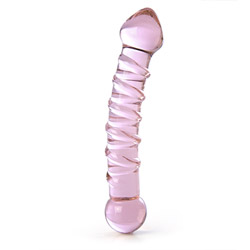Quote:
Originally posted by
Sir
Alright, so it's mainly in the inhalants that make it harmful? Then why are we keeping people from using talcum powder to dust their toys? The talc used in the ceramic tiles was the same as talcum powder, only it was mixed with other powders to
...
more
Alright, so it's mainly in the inhalants that make it harmful? Then why are we keeping people from using talcum powder to dust their toys? The talc used in the ceramic tiles was the same as talcum powder, only it was mixed with other powders to make the finished product.
I do understand what you mean, but I do not see how there is a difference between specifically the powder used in the ceramic dildos and the powder used in ceramic tiles to the powder that we dust our dildos off with.
less
While talc has not been 100% positively linked to cancer, it has been correlated with it -- particularly aerosolized talc with lung cancer. There have been a few studies which show a correlation of talcum use with ovarian cancer as well.
Even if you could safely dust your toy with talc while wearing a mask to prevent inhalation, researchers are not 100% certain of the mechanism by which talc could cause ovarian cancer. While they have been better able to demonstrate a correlation between inhalation of talc and lung cancer, they have not been able to effectively DISprove that absorption of talcum powder through membranous tissues can lead to cancer (though they have not exactly proven it either).
They have their theories (see my above post about how ovarian cancer could be secondarily caused by inhalation), but just to be cautious, it is advisable to not allow loose talcum powder to soak into your skin (especially membranous skin which more readily absorbs substances). Corn starch is thus considered to be much safer for use around the genitalia since there are no adverse effects correlating it with disease.
However, just because there are cautions against inhaling talc (as well as against using loose talc on membranous tissue), this does not mean that talc is dangerous in all forms. There have been absolutely no indications that drinking from ceramic mugs with lead-free glazes are dangerous, for example -- even though the absorbent membranes of the inner lip make contact with it. The ingredients in the formulation of ceramic dishes have been bonded by firing in a kiln, precluding most loose materials rubbing off on or being absorbed by the skin. To make the ceramic non-absorbent to liquids, it is glazed, which also prevents anything from the ceramic composite from leaching into the skin.
It would be difficult to imagine how you could absorb or inhale the talc which is used in ceramics as it is not exactly "loose" and absorbable. It has been mixed with other ingredients to which it forms bonds and is stable. Plus, the glaze provides an even greater degree of protection.
Keep in mind that many objects which you use on a daily basis could be dangerous to you if they were broken down into their various components as they would then be allowed to react with other chemicals to form a new compound or molecule that could potentially be dangerous.
Additionally, there is more than one type of ceramic mixture on the market. Just because talc is used to formulate the ceramic in tiles does not mean that talc is used to formulate the ceramic in plates or sex toys. But even if it was, the amount used may be negligible (not to mention being present in a different form that poses a much, much lower risk of inhalation or absorption).



















